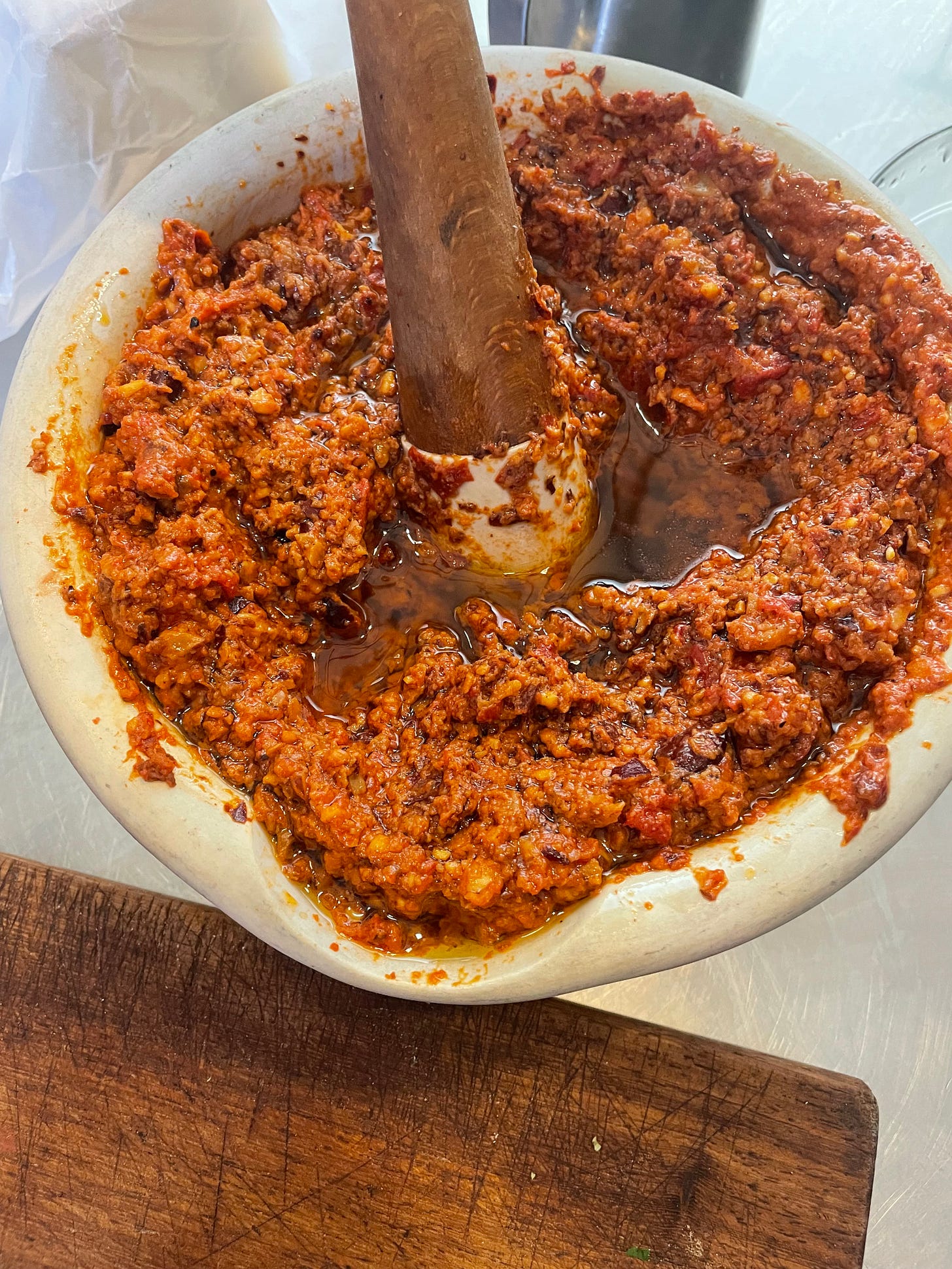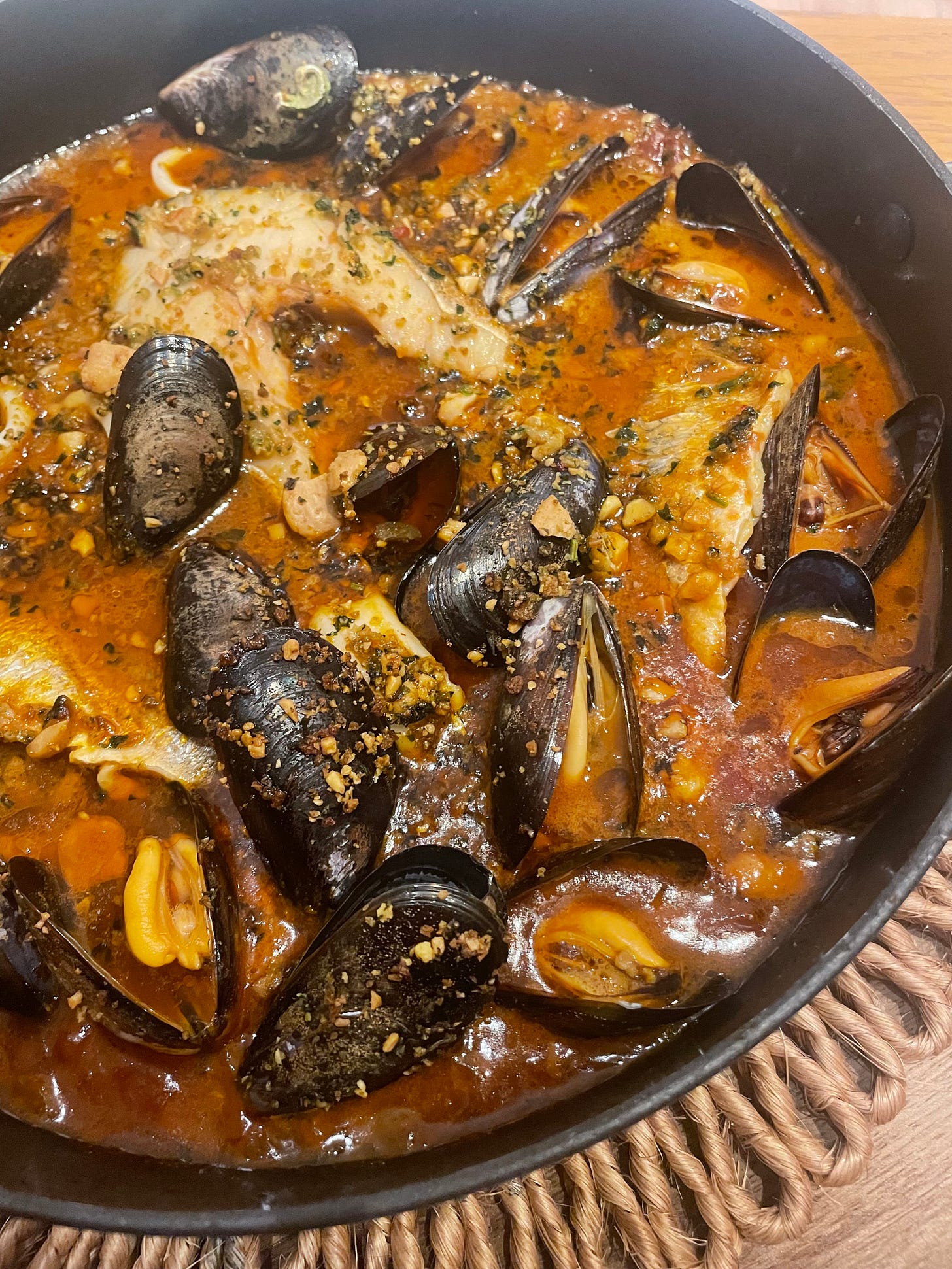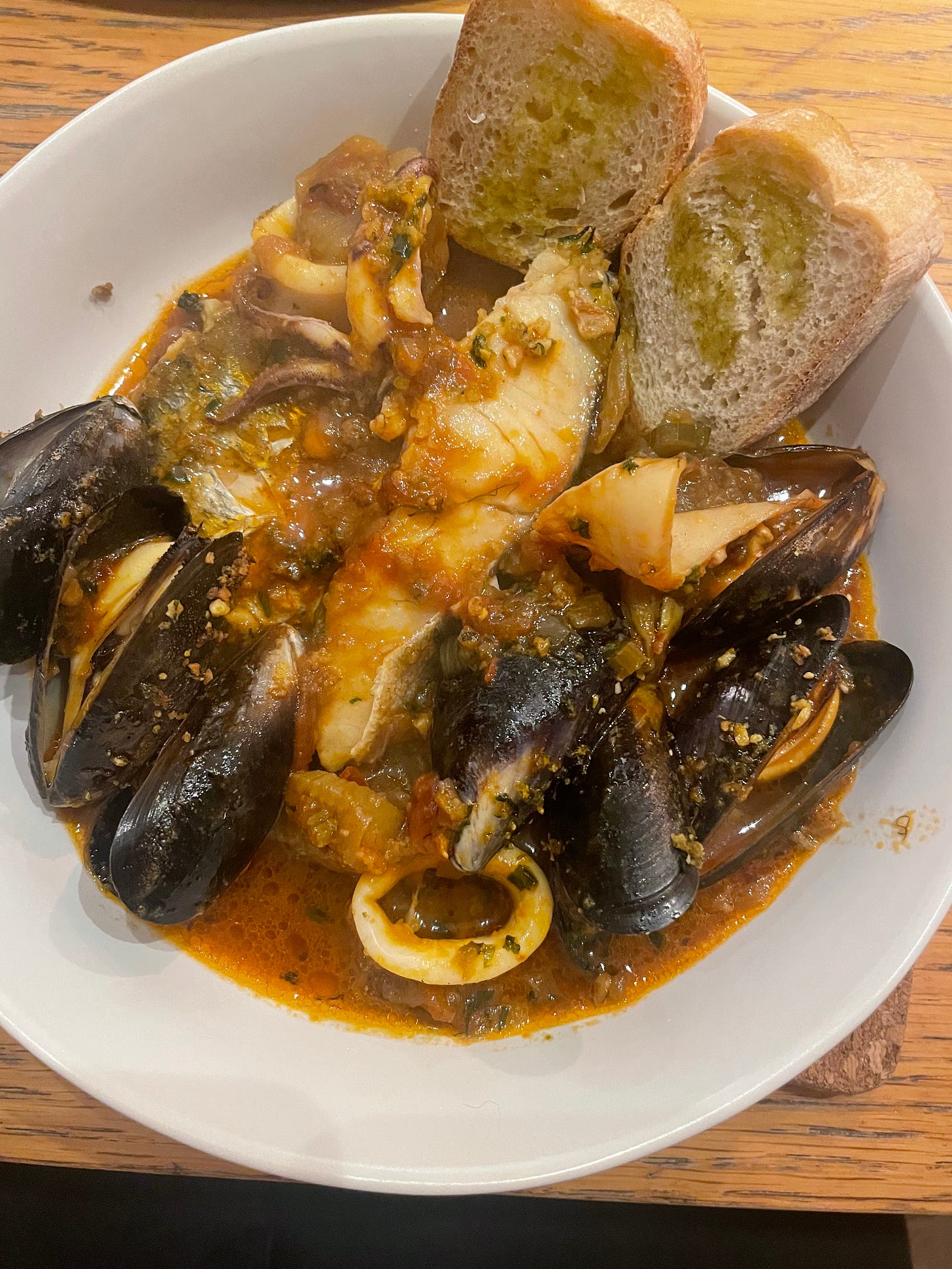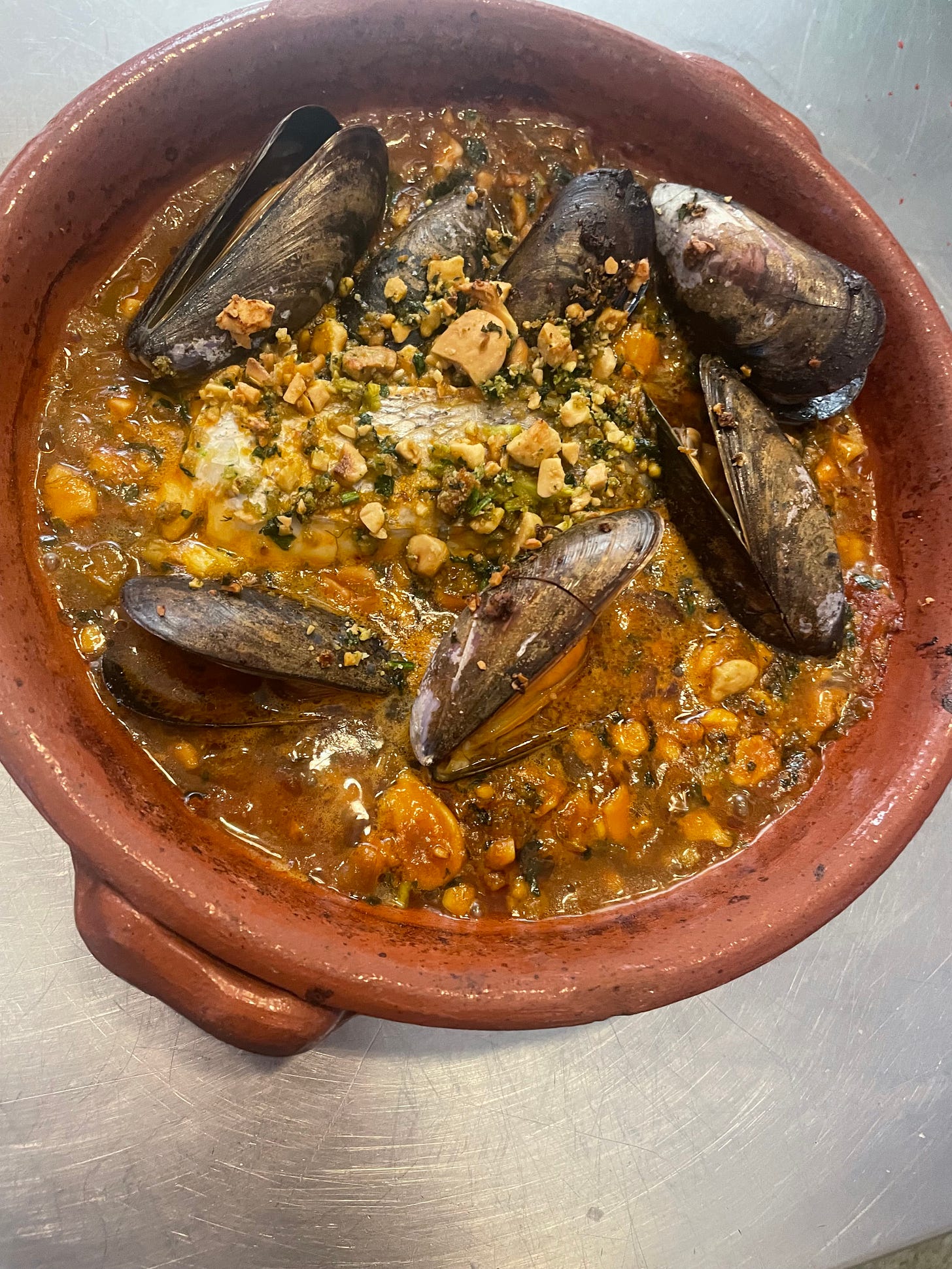Writing this post has taken me a silly amount of time. No matter what I did it didn’t sound right. It made me think that writing is sometimes a lot like a salad: sometimes it just doesn’t look right, and you need to pick it up with your fingers and put it down again until it does. Anyway, many hours later, I am happy enough with it, and here it is in your inbox. Today’s recipe: word salad. Or rather, a stew.
I bought a lovely big hake last week, and some mussels too. The plan was to make a fish stew of sorts. What exactly I knew not, as is often the case: I committed myself by ordering the fish, but there are lots of fish stews in the world, and the question, as ever, was how to decide which one to cook? The weather was sunny and bright, and my thoughts turned, as they usually do, to the Mediterranean. The fish stews of the Med are myriad but all share a similar disposition: tomatoes, olive oil and garlic for sure, and perhaps some orange peel, wild fennel or saffron. What interests me greatly is the similarity between all the fish stews of the same sea. The cuisines of Provence and Languedoc are those that I come back to time and time again, but this time I sailed my ship away from Marseille and across the Gulf of Lion to Catalonia.
Catalan cooking is some of the finest on the continent. Colman Andrews, writing in his book Catalan Cuisine, calls it ‘Europe’s Last Culinary Secret’, and the cuisine, with its mixed French, Roman and Moorish roots, is one of nuanced, rustic brilliance. I see a lot of similarities between my beloved Southern French cooking and that of Catalonia; a similar approach but a different accent.
The previous week at the café I had some lovely leeks to cook with, and this time I decided to grill them to serve with a classic Catalan sauce: romesco. Romesco sauce is very good; a deeply flavourful paste made with pounded roasted almonds, toasted breadcrumbs, red peppers, tomatoes, paprika, olive oil and sherry vinegar. The only proper way to make a romesco sauce is to pound it in a pestle and mortar. The persistent noise is not ideal on a slight hangover, as I found out, but by whizzing it all up in a food processor you are only cheating yourself.
In the winter, the Catalans hold a festival called a calçotada: a festival celebrating the calçot, a vegetable a bit like a leek crossed with a spring onion. The celebrated alliums are grilled until blistered and blackened over coals, then dipped into the sauce and munched whole, held high above the head to droop into the mouth. Smoky, messy fun. If no calçots or charcoal fires are available, use leeks instead, and I’m sure you’ll be forgiven too for grilling them on a cast iron griddle like I did.
Having thoroughly enjoyed smashing things up in the pestle and mortar, when I thought of what to cook with my fish my instinct was to cook something Catalan. Years ago In Barcelona I went to a place called Els Quatre Gats (‘the four cats’ - apparently a favourite café of Picasso’s) and had an excellent dish of roast monkfish served with romesco, this time wetter, like the sauce had been stirred into the roasting juices from the fish. It was deeply savoury and most delicious. This was a romesco de peix, but what I really wanted to make was something similar that I hadn’t made for years and years, one of my very favourites in the Catalan canon: Sarsuela, a fish stew thickened with an almond picada.
Now then, Colman Andrews gives us a few words of warning on this dish: “if suquet is Catalonia’s most famous fish soup sarsuela is its most notorious. A Barcelona restaurant dish of the nineteenth century, sarsuela throws everything into the pot, embarassing itself with riches […] Its name, spelled zarzuela in Castilian, in fact means a kind of operetta or musical comedy, the implication being that this is a sort of variety-show of a dish, presumably not to be taken too seriously”. But in the right hands, of course, this can be a delicious thing: a rich stew full of choice fish, enriched and thickened with an aromatic smash of roast almonds, toasted breadcrumbs, parsley, garlic and saffron.
A Sarsuela is not a complicated thing to make, but is not the quickest to put together, for the fish stew base must be simmered long and slow on the stove until the tomatoes cook down to a rich sauce and all the flavour is extracted from the bones of the fish. The stew is made with a soffrito (or rather, since we are in Catalonia, a sofregit) of onion, garlic, celery and fennel, then some tomatoes, white wine, fish stock, soaked dried peppers and a good dash of Spanish smoked paprika. So far, so good, but your secret weapon is the picada, which will add a massive whack of flavour to your already delicious dish.
A picada is a much simpler thing than a romesco, less of a sauce than a thickening agent, a cross between a pounded paste and a nubbly sprinkle. It’s much drier, and just the thing for throwing into a simmering stew towards the end of cooking: a picada will both thicken and enrich. I like to start my sarsuela on the hob before topping with the picada and finishing it in the oven. It’s a nice even heat that cooks the stew from all sides, and leaves the picada crisp. As you bring the dish to the table it will still be bubbling, and if you are lucky enough to be able to use an earthenware dish to cook the stew in, the aromas of saffron, roast nuts, garlic and stewed seafood will be joined by the smell of hot baked terracotta, a smell that feels ancient and vital.
Sarsuela (Catalan fish stew)
serves 4


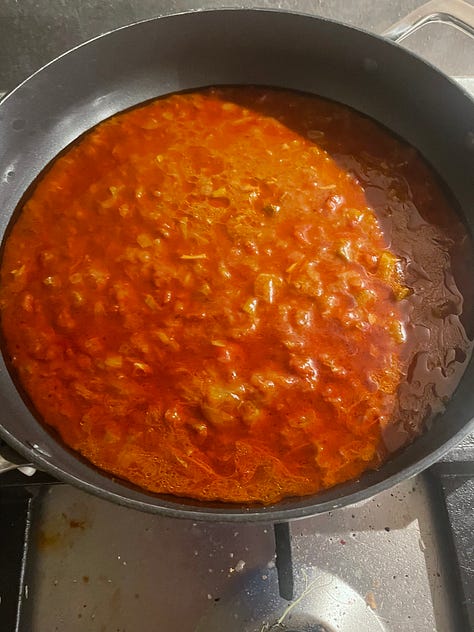
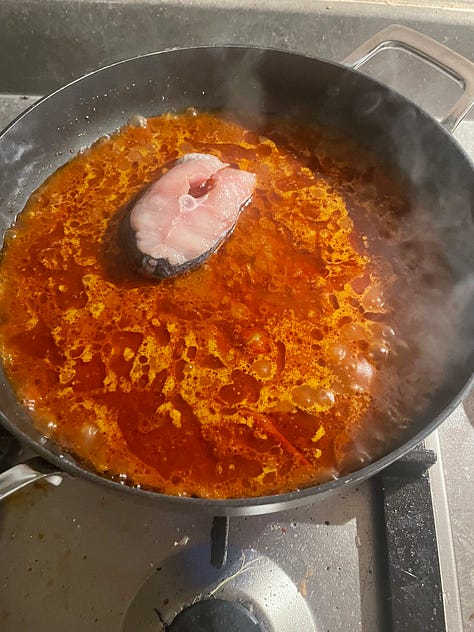

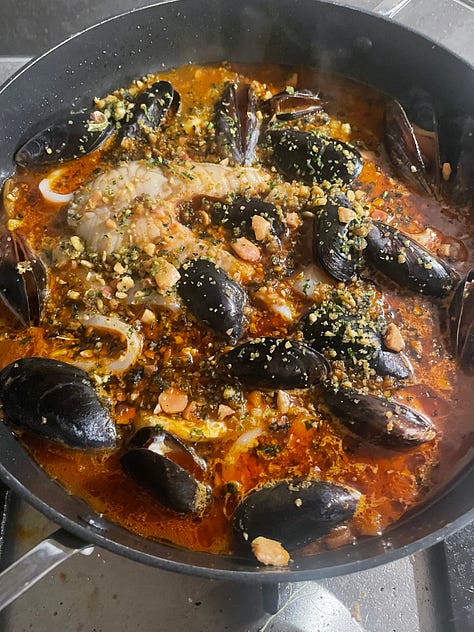
For the fish stock
1kg fish bones and heads (gills removed and washed well)
1 onion, peeled and halved
Keep reading with a 7-day free trial
Subscribe to Garlic, Mint & Sweet Basil to keep reading this post and get 7 days of free access to the full post archives.


